- Need Technical Assistance? ibacareerfair2021@getvfairs.io
Cancelling your registration will remove your access to the event. If you proceed, you will no longer be able to participate or access event-related materials.
Deleting your account will remove your access to the event.
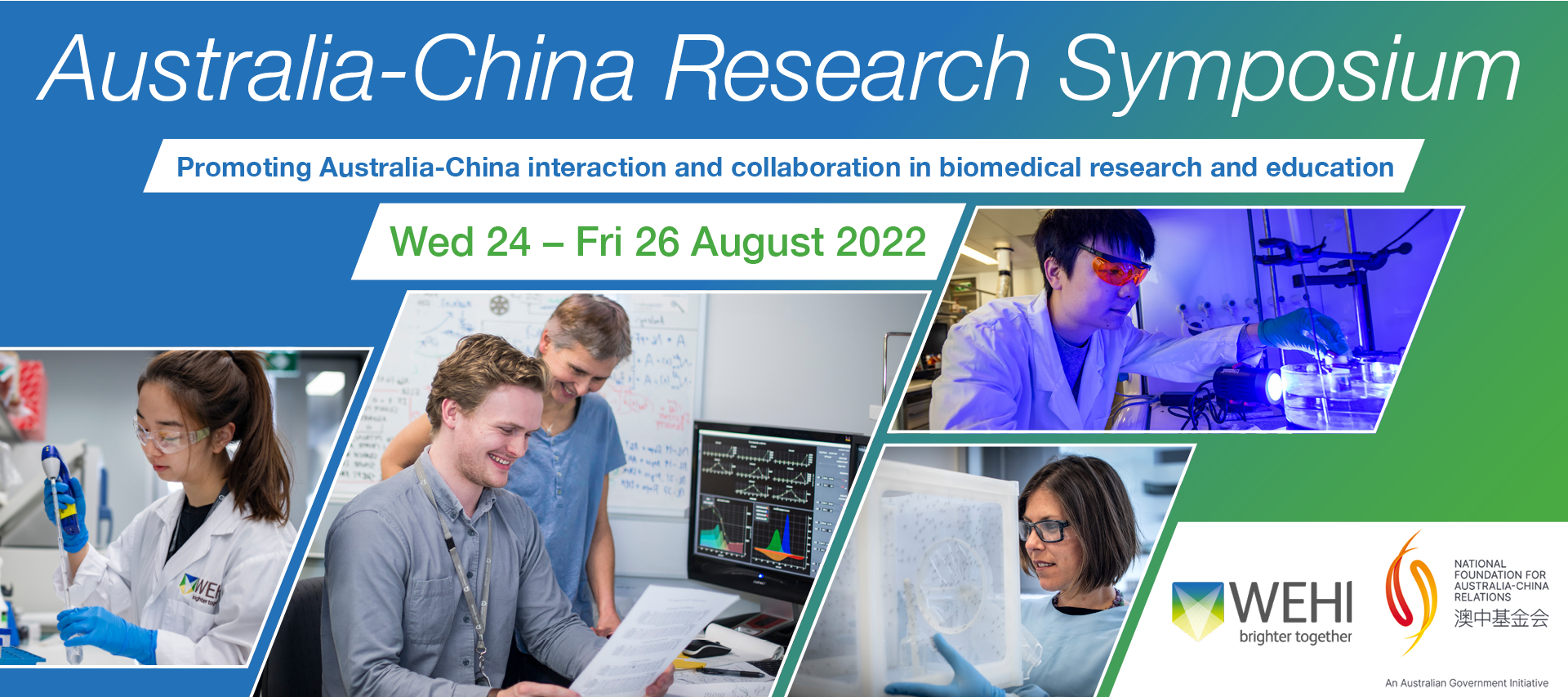
WEHI Australia-China Research Symposium 2022 aims to share knowledge and resources, to foster new relationships, and to build international collaboration in biomedical research. Supported by the National Foundation for Australia-China Relations.
Register now to hear from international leaders across diverse themes of global health and medical research.
Live sessions from 10:00am to 1:30pm AEST and 2.00pm to 5.30pm Aug 24th-26th 2022. Connect with symposium participants and partners through. Registration is free.
Organisers acknowledge the Wurundjeri people of the Kulin Nation as the traditional owners of the land where the conference will be held, and recognise their continuing connection to country and community.

























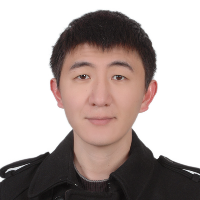


















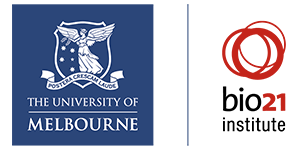




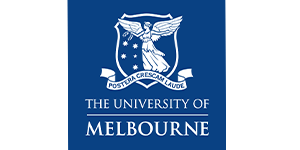


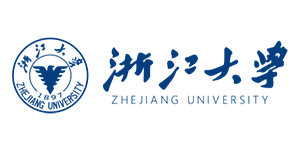
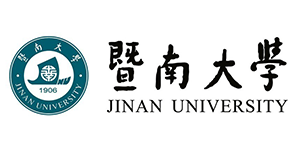











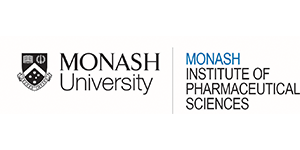
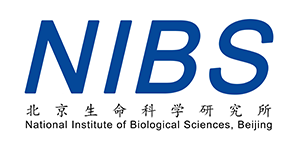

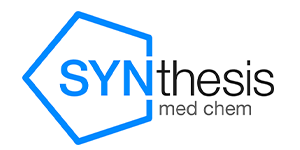

Professor Melanie Bahlo is the “Healthy Development and Ageing” Theme Leader at the Walter and Eliza Hall Institute of Medical Research (WEHI). A statistical geneticist/bioinformatician with over 20 years’ experience she leads a dry lab that seeks to identify genetic risk factors in neurological and retinal disorders using genomic-driven approaches. As well as conducting studies, her lab also develops novel algorithms and software to help identify genetic risk factors, applying these bespoke methods to publicly available, large-scale data such as the UK Biobank as well as locally recruited cohorts. Current research interests are: repeat expansions, Mendelian randomization, RNA editing and polygenic risk score utilization in sequencing studies with disease research interests focused, on epilepsy, retinal disorders, ataxia, Parkinson’s disease and dementia.
Professor Moira O’Bryan is Dean of Science at the University of Melbourne. She graduated from The University of Melbourne in 1994 with a BSc(hon) then PhD in the area of immunology and reproductive biology. She undertook post-doctoral training at Rockefeller University in New York and worked for many years at Monash University. The foci of Dr O’Bryan’s research include sperm development and function, genetic causes of human infertility, and the implications for ‘reproductive’ proteins on health broadly. She directs a multidisciplinary and highly collaborative research program covering fundamental research, and clinical medicine. In her role as Dean, she directs a large faculty spanning physics, chemistry, life and ecological sciences, mathematics, geosciences and human geography.
Dr O’Bryan has received research-based fellowships and awards from numerous agencies. She was the 2008 American Society of Andrology (ASA) “Young Andrologist of the Year”, the 2015 Anne McLaren Memorial Lecturer (Society for Reproduction and Fertility, UK) and the 2015 Society for Reproductive Biology President’s Lecturer. She will be awarded the Fuller Bazer Award by the Society for the Study of Reproduction (North America) for excellence and service to the field of reproductive biology in 2022. She is a fellow of the Society for the Study of Reproduction, and the Society for Reproductive Biology.
In addition to roles related to research and education, Dr O’Bryan has played a notable part in the promotion of sciences broadly including via positions as a national director of The Australian Society for Medical Research, and as a member (and chair) of the Australian Academy of Science National Committee for Cell and Developmental Biology. She is a past member of the Australian Research Council College of Experts and has served in numerous roles within the National Health and Medical Research Council. She is the most recent past president of the Society for Reproductive Biology.
Marnie’s lab focuses on understanding the mechanisms of epigenetic control, and how such mechanisms can be manipulated in the context of disease. She uses functional genetic screens to identify epigenetic regulators, which she started as a PhD student with Emma Whitelaw at The University of Sydney. Marnie took up a NHMRC Post-doctoral fellowship with Doug Hilton WEHI to work on the novel protein SMCHD1 that she identified in her PhD. This work earned her the AAS Gani medal and the L’Oreal Australia Women in Science fellowship 2009. In 2010, Marnie established her own lab at WEHI as an ARC QEII fellow. Her recent work on SMCHD1 and mechanisms of epigenetic silencing earned her the Genetics Society of AustralAsia Ross Crozier medal and the Lorne Genome Women in Science award. She jointly leads the Epigenetics and Development Division as a NHMRC Leadership fellow.
Quan Zhao received his B.S. degree at the Department of Biochemistry, Nanjing University, China, in 1988, and PhD at the Department of Biochemistry, La Trobe University, Australia, in 2001. After a post-doctoral training at the Royal Melbourne Hospital, he moved back to Nanjing University, China, in 2010. His research interests focus on dissecting the molecular mechanisms of various cancers and hemoglobinopathies through transcriptional/epigenetic tools/pathways. He is now a principal investigator in the State Key Laboratory of Pharmaceutical Biotechnology and a full professor of biochemistry and molecular biology at the School of Life Sciences, Nanjing University, China.
Associate Professor Gemma Kelly received her PhD from The Cancer Research UK Institute for Cancer Studies at The University of Birmingham, UK. She joined the group of Professor Andreas Strasser in the Molecular Genetics of Cancer Division at The Walter and Eliza Hall Institute of Medical Research (WEHI) in 2009 as a Kay Kendall Leukemia Fund visiting research fellow. In 2019 she established her own research group in the Blood Cells and Blood Cancer Division at WEHI with the aim to improve therapeutic outcomes for patients with aggressive lymphomas. The team are focused on the interrogation and manipulation of the intrinsic apoptotic pathway for cancer therapy and an understanding of the deregulation of the TP53 tumour suppressor pathways in therapy resistant cancers.
Dr. Yanhong Ni studied immunology and molecular biology and completed her masters and PhD at the School of Life Sciences, Nanjing University, China. She is a scientist with specific expertise in oral cancer (human and murine models), working within a clinical hospital setting in China. She is currently an associate professor at the Central laboratory, Nanjing Stomatological (diseases of the mouth) Hospital, Medical School of Nanjing University. She worked as a visiting scholar at The Walter and Eliza Hall Institute of Medical Research for one year. Dr Ni’s current research program is focused on inflammation-associated oral squamous cell carcinoma (OSCC) particularly understanding the relationship between cancer related fibroblast and OSCC onset and progression. Her research is also focused on the surgical margin of Oral cancer. Her research was supported by 11 grants including 3 National Natural Science Foundation grants.
Selected Publications:
(1) Zhang Xiaoxin; Dong Yingchun; Zhao Mengxiang; Ding Liang; Yang Xihu; Jing Yue; Song Yuxian; Chen Sheng; Hu Qingang; Ni Yanhong. ITGB2-mediated metabolic switch in CAFs promotes OSCC proliferation by oxidation of NADH in mitochondrial oxidative phosphorylation system, Theranostics, 2020, 10(26): 12044-12059.
(2) Zhao Xingxing; Ding Liang; Lu Zhanyi; Huang Xiaofeng; Jing Yue; Chen Sheng; Hu Qingang; Ni Yanhong. Diminished CD68+ cancer-associated fibroblasts subset induces Tregs infiltration and predicts poor prognosis of oral squamous cell carcinoma patients, Am J Pathol, 2020, 190(4): 886-899.
(3) Yang Xihu; Zhang Xiaoxin; Jing Yue; Ding Liang; Fu Yong; Wang Shuai; Hu Shiqi; Zhang Lei; Huang Xiaofeng; Ni Yanhong; Hu Qingang. Amino acids signatures of distance-related surgical margins of oral squamous cell carcinoma, EBioMedicine, 2019, 48: 81-91
(4) Wang Yujia; Jing Yue; Ding Liang; Zhang Xiaoxin; Song Yuxian; Chen Sheng; Zhao Xingxing; Huang Xiaofeng; Pu Yumei; Wang Zhiyong; Ni Yanhong; Hu Qingang. Epiregulin reprograms cancer-associated fibroblasts and facilitates oral squamous cell carcinoma invasion via JAK2-STAT3 pathway, J Exp Clin Cancer Res, 2019, 38: 0-274.
(5) Ding Liang; Ren Jing; Zhang Dongya; Li Yi; Huang Xiaofeng; Ji Jianjian; Hu Qingang; Wang Hui; Ni Yanhong; Hou Yayi. The TLR3 Agonist Inhibit Drug efflux and Sequentially Consolidates Low-dose Cisplatin-based Chemoimmunotherapy while Reducing Side effects. Mol Cancer Ther, 2017, 16(6): 1068-1079
Dr. Lingyi Chen obtained a PhD degree in Biology from Northwestern University, Evanston, Illinois, the United States in 2004. After completing his postdoctoral training at Harvard University from 2005 to 2008, he moved back to China and set up his laboratory at Nankai University, Tianjin, in 2008. He is currently a Professor of Cell Biology in the College of Life Sciences. The goal of the research in Chen laboratory is to understand the molecular mechanism underlying pluripotency maintenance and differentiation of embryonic stem cells, as well as carcinogenesis.
Selected publications
Dr. James Wang graduated from the University of Melbourne in 2009 with a Bachelor in Biomedical Science and Honours in Biochemistry. From 2011 to 2015, he studied for his PhD at the Australian National Univrsity under the supervision of Prof. Chris Goodnow. He then trained at the National Institutes of Health USA under Louis Staudt from 2016 to 2020. In April 2021, Dr. Wang established his own laboratory at the Zhejiang University and University of Edinburgh Institute.
Jane E Visvader
Laboratory Head and Joint Head of the Cancer Biology and Stem Cells Division, The Walter and Eliza Hall Institute of Medical Research, Melbourne, VIC, Australia. Professor, Department of Medical Biology, University of Melbourne
Jane Visvader is Head of the Breast Cancer Laboratory and the Division of Cancer Biology and Stem Cells at The Walter and Eliza Hall Institute of Medical Research (WEHI) and holds a Professorial appointment in the Department of Medical Biology at the University of Melbourne. Her primary research interests are directed towards understanding breast cancer through the prism of the breast differentiation hierarchy and normal mammary gland development. Her laboratory’s contributions to the mammary gland field include: the prospective isolation of mouse and human mammary stem cells; definition of key regulators of lineage commitment and maturation; discovery that mammary stem cells are sensitive to steroid hormones; identification of luminal progenitors as the ‘cell of origin’ in BRCA1 mutation carriers and a targetable molecule; the generation of an extensive bank of preclinical human breast cancer xenograft models; the clonal tracking of normal progenitors and tumor cells in vivo using high resolution 3D imaging technology. Dr Visvader is a Fellow of the Royal Society, the Australian Academy of Science and the American Association for Cancer Research (AACR) Academy.
Associate Professor Justine Mintern is an Australian Research Council Future Fellow (Level 2) and heads the Vaccine Biology Laboratory in the Department of Biochemistry and Molecular Biology at The University of Melbourne. A/Prof Mintern creates new understanding of how dendritic cells ignite immunity for exploitation in settings of vaccination and immunotherapy. A/Prof Mintern's research vision extends beyond traditional immunology paradigms into new frontiers of cell biology, genetic screening and nanotechnology. The Mintern laboratory uses cutting-edge technologies including innovative CRISPR/Cas9 screens, bioengineered probes, nanoparticles and models of prophylactic and therapeutic vaccination to advance dendritic cell biology, an important area of breakthrough science. This research creates avenues for clinical advances for vaccination and immunotherapy. With recent outstanding publications in Science (2022) and Nature Communications (2022), A/Prof Mintern has published > 90 manuscripts, has a field weighted citation index of 3.66 (2016-2021) and is ranked in the top 0.063% experts in dendritic cells of 96,220 published authors worldwide (Expertscape). A/Prof Mintern has been awarded funding from NHMRC and ARC.
Dr Li Wu is a professor of Tsinghua University School of Medicine. She obtained her PhD degree from The University of Melbourne, Australia. She then worked as a research fellow and senior research fellow in the Walter and Eliza Hall Institute in Melbourne since 1996. She was recruited to Tsinghua University in 2010. Her major research interests include molecular regulation of immune cell differentiation, particularly the differentiation of T-lymphocytes and dendritic cells (DCs), the development and homeostasis of the mucosal immune system in lung and intestines, and the functions of innate immune cells in tumour microenvironment. She was the first internationally to identify the earliest progenitors for T-lineage cell differentiation and their developmental pathways. She has pioneered the research on transcriptional regulation of DC differentiation. She has published over 150 research papers in peer-reviewed journals, including Nature, Nat Immunology, Immunity, J.Exp.Med. PNAS etc. She has been ranked by ELSEVIER as one of the most cited Chinese Researchers in the field of Immunology and Microbiology in last 7 consecutive years.
Dr Yuekang Xu completed his PhD research at the Walter and Eliza Hall Institute (WEHI) of Medical Research in Melbourne, Australia, where he performed biochemical characterization of B cell signaling pathways in the absence of Lyn kinase. In 2008, following post-doctoral training at the Peter MacCallum Cancer Centre with genetic modification of signaling molecules in dendritic cells (DCs) and T cells for enhanced anti-cancer efficacy, he returned to WEHI to establish an independent line of research on developmental and functional characterization of inflammatory DCs, where he proposed that GM-CSF hijacks conventional DC precursor for inflammatory DC development. At present, Dr Xu is appointed as Specially Invited Expert of Anhui Province, and Professor in Anhui Normal University, China. Recent work from his laboratory has identified key roles of vascular DCs in regional inflammation and pathophysiology of vascular tissues.
Professor Linrong Lu is a Qiushi Distinguished Professor in Immunology at Zhejiang University School of Medicine. Professor Linrong Lu’s research is to elucidate the molecular pathways and cellular interactions that mediate and regulate thymocyte development and T cell-mediated immune responses. His work led to the discovery and functional characterization of two key signaling molecules, Tespa1 as an essential singling molecule in mediating thymocyte positive section signal, and MINK1 kinase as a modulator in peripheral T cell effector functions. His work also helped to elucidate the mechanisms of how CD8+ T cells and NK cells regulate a CD4+ T cell-mediated adaptive immune response.
Professor Lu has published more than 60 academic research and review papers in internationally renowned journals such as Nature Immunology, Immunity, J. Exp. Med., PNAS, and BLOOD. He has received numerous awards including the National Outstanding Youth Fund and the leading talent for science and technology innovation in middle and young age. He is currently a member of the Standing Committee of the Infectious Immunology Branch of the Chinese Immunology Society and the Immune Cell Division of the Chinese Cell Biology Society. He also served as editors for several Immunology Journals, including the American Journal of Clinical and Experimental Immunology, Cellular and Molecular Immunology (CMI), Chinese Journal of Immunology and Frontiers in Immunology.
Selected Publications
Dr Najoua Lalaoui is a Group Leader at the Peter MacCallum Cancer Centre in the Organogenesis Program. She completed her PhD at the University of Burgundy, during which she studied the mechanism of resistance to apoptosis induced by the cytokine TRAIL. In 2010, after being awarded a French ARC postdoctoral Fellowship, she accepted a postdoctoral position at La Trobe University and then at The Walter and Eliza Hall Institute. Her postdoctoral research focused on apoptosis, necroptosis and inflammatory signalling pathways triggered by innate immune ligands. She had a particular interest in determining the role of the TNF regulators RIPK1 and IAP. Her research on IAP inhibitors called Smac-mimetic accelerated their clinical development for the treatment of cancer (Cancer Cell 2016; Cell Death Differentiation 2020). She also revealed new regulatory checkpoints controlling RIPK1 functions (Molecular Cell 2017; Nature 2020).
Throughout her research career, Dr Najoua Lalaoui has constantly secured research funding as a lead investigator through the ‘Association pour la Recherche sur le Cancer’, NHMRC, Cancer Australia and the Worldwide Cancer Research support.
Her laboratory uses various biochemistry, molecular and cellular biology techniques and mouse models to investigate the causes, consequences and types of cell death activated by the innate immune receptors of the TNF and the TLR families. This fundamental knowledge is applied to reveal novel therapeutic interventions for cancer and inflammatory diseases.
Prof. Zhinan Yin received his B.S. degree from Hubei Medical University (now Medical School of Wuhan University) in 1984; He was awarded the M.S. degree in 1988 from Shanghai Second Medical University (now Medical School of Shanghai Jiaotong University). Then, he worked at the Guangzhou Medical College for 4 years and went to Italy Reference Center for Oncology and then Free Univ. Berlin in Germany to pursuit his Ph.D. Degree. After he was awarded the Ph.D. diploma of Immunology in 1997, he joined the Section of Rheumatology, Yale School of Medicine. He was promoted to Associate Professor from Postdoc Fellow within 10 years and received a Yale School of Medicine Achievement Award in 2006.
In 2007, He returned to China and became the Dean of College of Life Sciences, Nankai University,and moved to Guangzhou to set up Biomedical Translational Research Institute, Jinan University in 2013
He was awarded several honors for his contribution in life sciences, such as the Distinguished Young Investigator Award from Chinese Natural Science Foundation, Changjiang Professorship from Chinese Primary Administrator of Education, The Innovative Talents Contribution Award of All China Federation of Returned Overseas, et. al.
Dr Yin's research interests include:
1. T-cell differentiations and functions;
2. Molecular mechanisms of tumor immunity;
3. Discovery of small molecules for cancer and inflammatory diseases;
4. Mechanisms of autoimmune diseases;
5. In testinal microbiota and disease. He has authored or co-authored over 100 publications on Nature, JEM, JCI et. al. Immunotherapy using γδ T-cell from his research group is now under preclinical studies.
Professor John Silke completed a law degree in King's College, London (1989), a Biochemistry degree at Churchill College, Cambridge (Nat Sci Tripos 1992), a PhD in Zürich, Switzerland, with Prof. Walter Schaffner (1997), and a post-doc with Prof. David Vaux in the WEHI, Australia (1997-2005). His post-doc research centered around cell death mechanisms and in particular the role of Inhibitor of APoptosis proteins (IAPs) in regulating cell death. His lab in La Trobe University (2006-2011) and WEHI (2011-) continues to explore the functions of IAPs and the transcriptional and programmed cell death pathways that they regulate; extrinsic apoptosis (eg driven by TNF) and necroptosis, in both cancer and inflammation.
Professor Guillaume Lessene was trained as an organic chemist, completing his PhD at the University of Bordeaux, before undertaking postdoctoral work with Professor Feldman at the Pennsylvania State University. Since moving to WEHI in 2001, he has worked at the juncture between drug discovery and chemical biology with a major research focus on the development of small molecules that target the apoptotic and necroptotic cell death pathways. He has been part of major academia-industry collaborations (Genentech, Abbvie, Servier) aimed at developing and characterizing first-in-class BH3-mimetics. Since January 2019, he heads the New Medicines and Advanced Technologies Theme at WEHI. This multidisciplinary Theme comprises basic research driven by structural and chemical biology, translation of basic discoveries from early stage drug discovery to clinical research, and cutting-edge technologies. He is also the Chief Scientific Officer of Anaxis Pharma, a Melbourne-based biotech company developing novel medicines targeting cell death.
Dr. Dijun Chen received his PhD in Bioinformatics from the Martin Luther University of Halle-Wittenberg, Germany, in 2017. Currently he is working as a associate Professor in Bioinformatics at School of Life Sciences, Nanjing University. Using large-scale computational regulatory genomics (Big data), statistical and machine learning methods (AI), his research group is interested to investigate the basic molecular principles and evolutionary diversity of gene regulation in development, growth and disease in eukaryotic organisms (Bio). More information can be found from the website of https://compbio.nju.edu.cn/.
Dr Yunshun Chen is a laboratory head in the Cancer Biology and Stem Cells Division at WEHI. His main research interests are gene/transcript expression, alternative splicing, single-cell omics analysis, spatial technologies, as well as the application of these cutting edge technologies in cancer research. He is one of the authors and the main maintainer of the edgeR package. The Chen Laboratory has extensive experience and strong expertise in differential gene/transcript expression and pathways analysis in RNA-seq experiments, differential DNA methylation analysis, and comprehensive single-cell RNA-seq integration analysis. Over the past decade, his has been working closely with biomedical scientists on cancer research, focusing on cancer genesis and the identification of cancer cell-of-origin.
Dr. Naiyang FU obtained his Bachelor of Science at Xiamen University (China), and then his Master of Science at Sun Yat-sen University (China). He subsequently completed his PhD study at the Institute of Molecular and Cell Biology (IMCB) / National University of Singapore (NUS). After his postdoctoral training at the Walter and Eliza Hall Institute of Medical Research (WEHI), he returned back to Singapore and has been appointed as a Lab Head / Principal Investigator at the Duke-NUS Medical School since 2016. He currently holds an adjoint faculty appointment in WEHI and Duke-NUS. His recent research focuses on the cellular and molecular mechanisms underpinning normal development, regeneration and tumorigenesis in epithelial tissues, including breast, liver and skin. To this end, his laboratory combines cutting-edge technologies in molecular biology and mouse genetic approaches for their research.
Prof. Ming Chen is the director of the Bioinformatics Laboratory at the College of Life Sciences, Zhejiang University, China. He received his PhD in Bioinformatics from Bielefeld University, Germany in 2004. His group research work covers bioinformatics, systems biology, non-coding RNA transcriptomics, proteomics and precision medicine. For example, 1) Based on high-throughput sequencing data, they developed bioinformatics approaches to systematically identify the characteristics and functional regulation of non-coding RNAs such as microRNA, siRNA, ceRNA, lncRNA and circRNA, which promoted the comprehensive understanding of non-coding RNAs. 2) They integrated and analysesed high-throughput multiple omics data, including scRNA-seq, to reveal the mutual regulation relationship among the omics data, and to reconstruct biological networks, including gene regulation, protein interaction, metabolic pathways and non-coding RNA networks. 3) They investigated peptides derived from food resources, and putative peptides encoded from noncoding RNAs; integrated protein-protein interactions of rice and neurodegenerated diseases; developed deep learning model to predict protein-protein interaction and identify/visualize important binding residues. 4) They innovated and developed relevant bioinformatics methods & piplines, databases & tools and web servers, and established the BIS bioinformatics analysis platform (http://bis.zju.edu.cn/), his lab website: http://bis.zju.edu.cn/binfo.
Prof. Ming Chen has published over 200 papers on peer-viewed journals. He is the President of the Bioinformatics Society of Zhejiang Province, China; Deputy director of Chinese Society for "Modeling and Simulation of Biological Systems", Committee executive member of Chinese Society for "Computational Systems Biology" and Committee member of Chinese Societies for "Functional Genomics & Systems Biology", "Biomedical Information Technology" and "Biophysics (Bioinformatics) ". He servers as a panel reviewer for NSFC.
Selected 20 publications:
Professor Alicia Oshlack has been at the forefront of bioinformatics research for more than 15 years. She is the Head of the Computational Biology Program and group leader at the Peter MacCallum Cancer Centre. She is best known for her large body of work on transcriptional analysis and medical genomics. In addition, Oshlack is internationally recognised for her development of bioinformatics methods for a range of applications including single cell RNA-seq, methylation and genomic analysis. Oshlack is involved in many cutting-edge collaborative projects utilising high throughput sequencing to investigate disease and development. She has published more than 100 papers and has developed more than a dozen software packages. Oshlack has been recognised by several awards including the Australian Academy of Science, Gani Medal for Human Genetics (2011) and the Georgina Sweet Award for Women in Quantitative Biomedical research (2016) and was recently elected as a member of the Australian Academy of Health and Medical Science.
Dr. Boxue Tian is currently an assistant professor in the School of Pharmaceutical Sciences at Tsinghua University. He received his B.S. from East China University of Science and Technology in 2008, and M.S. from Orebro University (Sweden) in 2009. He received his PhD degree from National University of Ireland-Galway in 2012, where he worked with Prof. Leif A. Eriksson. He then conducted postdoctoral research from 2013 to 2020 at UCSF with Prof. Matthew P. Jacobson.
Dr. Xiaoyun Lu is a professor of Medicinal Chemistry, Jinan University, Guangzhou. Dr. Lu’s research focuses on design and synthesis of bioactive compounds targeting lung disease, such as tuberculosis, lung cancer and acute lung injury. She has developed the antituberculosis TB47 and anticancer candidates JND5932. Both of them have been license out for further development. She has published about 70 SCI papers and co-invented 30 patents, received the National Outstanding Youth Fund (2019), China Pharmaceutical Association - Servier Pharmaceutical Chemistry Award (2014) and Chinese Academy of Sciences Lu Jiaxi Young Talent Award (2015).
Dr. Gelin Wang received her bachelor's degree and Ph.D. from Wuhan University in China. After doing her postdoctoral research at the University of Texas Southwestern Medical Center (UTSW) in the USA, she was promoted to Instructor and NCI program project grant co-investigator at UTSW in 2006. She joined Alphabet-founded Calico Life Sciences Company in 2015, then returned to China and joined the School of Pharmaceutical Sciences of Tsinghua University in 2017. Research in Dr. Wang’s laboratory is focused on exploring the biology of aging and discovering small molecules that intervene in the intracellular aging process to have therapeutic applications in age-related diseases.
Dr. Xiaodong Wang is currently the Director and Investigator of National Institute of Biological Sciences, Beijing. He received his BSc degree from Beijing Normal University and his PhD degree of Biochemistry from University of Texas Southwestern Medical Center at Dallas. Dr. Xiaodong Wang’s research centers on the biochemical understanding of programmed cell death in mammalian cells. Their laboratory is responsible for the discovery of the role of cytochrome c in apoptosis that established the signaling function of mitochondria. Their more recent work identified RIP3 kinase and its substrate MLKL as the core components of a pathway controlling and executing necroptosis. For his research achievements, Dr. Xiaodong Wang was elected to be a member of National Academy of Sciences, USA; Foreign-associate member of Chinese Academy of Sciences and European Molecular Biology Organization.
Professor Chris Porter is Director of the Monash Institute of Pharmaceutical Sciences (MIPS) at Monash University. Chris completed a Pharmacy degree and PhD in drug delivery at the University of Nottingham in the UK before moving to Australia to pursue an academic career. His personal research programs have subsequently focussed on understanding and quantifying the absorption, distribution and elimination profiles of drugs and on developing novel formulation approaches to optimise these profiles. Major interests include improving the absorption of poorly water-soluble drugs, the role of the lymphatic system in drug absorption and the potential utility of dendrimers and other nanomaterials as drug delivery systems. Chris has published more than 250 peer reviewed papers (>24,000 citations, h-index 82) in these areas. He is an inventor on >15 separate patent families, many of which have been the subject of licencing/assignment deals with national and international pharma/biotech companies. The most significant of these are with Starpharma (Melbourne) to develop the DEP® dendrimer-based drug delivery system (currently in Phase 2 clinical trial) and with PureTech Health (Boston) to develop the Glyph® lymphatic targeting technology (currently in Phase 1 clinical trial).
Professor Jing-Ning Zhu received his BSc in Biology from Nanjing Normal University in 2001 and his PhD in Physiology from Nanjing University. Since 2006, he has held faculty positions at School of Life Sciences, Nanjing University. He is currently professor of neurobiology, principle investigator in the State Key Laboratory of Pharmaceutical Biotechnology, and vice dean of School of Life Sciences. His major research interests are in the central motor system, motor control, motor diseases, as well as the somatic-nonsomatic integration. He has published over 40 papers in many major journals including Neuron, Science Advances, Journal of Clinical Investigation, Molecular Psychiatry, Current Biology, and PNAS. He is standing editorial board member of Acta Physiologica Sinica, reviewing editor of The Journal of Physiology, and editorial board members of The Cerebellum and Neuroscience Bulletin. He is also standing council member of the Chinese Association of Physiological Sciences (CAPS), council member of the Chinese Neuroscience Society (CNS), president of Jiangsu Provincial Society for Physiological Sciences (JSPSPS), standing council member of Jiangsu Society for Neurosciences (JSSN), and international delegate of Society for Research on the Cerebellum and Ataxias (SRCA).
Yifan Zhan is currently VP of Drug Discovery in Shanghai Huaota Biopharmaceutical Co., Ltd and responsible for the discovery and development of novel biologics.
He received his PhD in Immunology from the University of Melbourne, Australia, and then worked at the Walter and Eliza Hall Institute of Medical Research in Australia. He has long been engaged in research in the field of cellular immunity and has made significant contributions in the fields of immune cell activation/differentiation/survival, cell interaction. His interests also include the participation of immune cells and cytokines in the onset of tumors, autoimmune diseases and infectious diseases.
NAME: Yuxia Zhang
POSITION TITLE: Principal Investigator and Professor
EDUCATION/TRAINING
| INSTITUTION AND LOCATION | DEGREE (if applicable) |
Completion Date MM/YYYY |
FIELD OF STUDY |
|---|---|---|---|
| Shenyang Pharmaceutical University, Shenyang, China | BSc | 2001 | Pharmaceutical medicine |
| University of Chinese Academy of Sciences | PhD | 2007 | Virology and molecular immunology |
Yuxia obtained her PhD from the Chinese Academy of Sciences in 2007, followed by 2 years post-doctoral training in the Christopher Rudd Laboratory at the University of Cambridge (UK) (2007-2008). She joined the Leonard Harrison Lab at Walter and Eliza Hall Institute of Medical Research (WEHI) in February 2009 and was promoted to Senior Research Officer in 2014. She was appointed Lab Head April 2016 at Guangzhou Women and Children’s Medical center (GWCMC), Guangzhou Medical University. She bridges mouse and human immunology studies with cutting-edge genetic, metabolomic and cell signaling methodologies, and has identified novel biomarkers and pathogenic mechanisms in autoimmune and allergic diseases, and therapeutic targets and agents.
Her lab currently focuses on immune pathogenesis and novel treatment strategies for chronic and rare childhood diseases. They employ cutting-edge techniques including single cell RNA sequencing, whole genome-wide association study, whole exosome sequencing, comparative immune profiling, animal experiments and clinical trials to identify how risk and disease causal genes regulate tissue homeostasis. By close collaboration with clinicians of multiple disciplines, her team has recently discovered novel pathogenesis and treatment strategies for pediatric onset IBD and biliary atresia.
1997-2001 Shenyang Pharmaceutical University, Shenyang, China. Bachelor’s in pharmaceutical medicine
2001-2002 Beijing Kaiwen Biotech Ltd, Beijing China. Quality Control officer
2002-2007 University of Chinese Academy of Sciences, Beijing, China. PhD in virology and molecular immunology. Supervisor Prof. Po Tien
2007-2009 University of Cambridge, Cambridge, UK. Research Associate, Supervisor Prof. Christopher E Rudd
2009-2016 Walter and Eliza Hall Institute of Medicine Research, Parkville, Australia. Senior Research Officer, Supervisor Prof. Leonard Harrison
2016-current Guangzhou Women and Children’s Medical Center, Guangzhou University. Principal Investigator, Professor
Teaching and Supervision:
Current: 7 postdocs, 5 PhD candidates, 4 Master candidates, 6 research assistants
Past: two PhD students (co-supervisor), Julin Bosco, Yanhui Xu (Melbourne University)
1) Wang J#, Xu Y#, Chen Z#, Liang J#, Lin Z#, Liang H#, Xu Y, Wu Q, Guo X, Nie J, Lu B, Huang B, Xian H, Wang X, Wu Q, Zeng J, Chai C, Zhang M, Lin Y, Zhang L, Zhao S, Tong Y, Zeng L, Gu X, Chen ZG, Yi S, Zhang T, Delfouneso D, Zhang Y, Nutt SL, Lew AM, Bai F*, Xia H*, Wen Z* and Zhang Y*. Liver immune profiling reveals pathogenesis and therapeutics for biliary atresia. Cell. 2020; 183(1-7)
2)Huang B#, Chen Z#, Geng L#, Wang J#, Liang H#, Cao Y, Chen H, Huang W, Su M, Wang H, Xu Y, Liu Y, Lu B, Xian H, Li H, Li H, Ren L, Xie J, Ye L, Wang H, Zhao J, Chen P, Zhang L, Zhao S, Zhang T, Xu B, Che D, Si W, Gu X, Zeng L, Wang Y, Li D, Zhan Y, Delfouneso D, Lew AM, Cui J, Tang W, Zhang Y, Gong S*, Bai F*, Yang M* and Zhang Y*. Mucosal profiling of pediatric-onset colitis and IBD reveals common pathogenics and therapeutic pathways. Cell. 2019; 179(5):1160-1176
3) Zhang Y*, Collier F, Naselli G, Saffery G, Tang MLK, Allen KJ, Ponsonby AL, Harrison LC*, Vuillermin P*. Cord blood monocyte-derived inflammatory cytokines suppress IL-2 and induce nonclassic “T(H)2-type” immunity associated with development of food allergy. Sci Transl Med. 2016; 8(321):321ra8
4)Zhou L#, Liu T#, Huang B#, Luo M, Chen Z, Zhao Z, Wang J, Leung D, Yang X, Chan KW, Liu Y, Xiong L, Chen P, Wang H, Ye L, Liang H, Masters SL, Lew AM, Gong S, Bai F, Yang J, Lee PPW, Yang W, Zhang Y, Lau YL*, Geng L*, Zhang Y* and Cui J*. Excessive deubiquitination of NLRP3-R779C variant contributes to very-early-onset inflammatory bowel disease development. J Allergy Clin Immunol. 2020;
5) Zhan Y#, Zhang Y#, Zhang S, Coughlan H, Baldoni PL, Jacquelot N, Cao WHJ, Preston S, Cynthia Louis C, Rautela J, Pellegrini M, Wicks IP, Alexander WS, Harroson LC, Lew AM, Smyth GK, Nutt SL*, Chopin M* (2021). Differential requirement for the Polycomb repressor complex 2 in dendritic cell and tissue-resident myeloid cell homeostasis. Science Immunology, 2021, 6(63).
6)Zhang Y#, Kinkel S, Maksimovic J, Bandala-Sanchez E, Tanzer MC, Naselli G, Zhang JG, Zhan Y, Lew AM, Silke J, Oshlack A, Blewitt ME, Harrison LC*. The Polycomb repressive complex 2 governs life and death of peripheral T cells. Blood. 2014;124 (5):737-49
7) Zhang Y#, Maksimovic J#, Naselli G, Qian J, Chopin M, Blewitt ME, Oshlack A, Harrison LC*. Genome-wide DNA methylation analysis identifies hypomethylated genes regulated by FOXP3 in human regulatory T cells. Blood. 2013;122(16):2823-36
8)Bandala-Sanchez E#, Zhang Y#, Reinwald S, Dromey J, Lee B-H, Qian J, Bohmer RM, Harrison LC*. T cell regulation mediated by interaction of soluble CD52 with the inhibitory receptor Siglec-10. Nat Immunol. 2013;14:741-48
9) Liu X#, Li Z#, Sun J#, Chen Z#, Jiang M#, Zhang Q#, Wei Y, Wang X, Huang YY, Shi Y, Xu Y, Xian H, Bai F, Ou C, Xiong B, Lew AM, Cui J, Fang R, Huang H, Zhao J*, Hong XC*, Zhang Y*, Zhou F*, Luo HB*. Potential therapeutic effects of dipyridamole in the severely ill patients with COVID-19. Acta Pharm Sin B. 2020; 10(7):1205-1215
10) Liu M#, Lu B#, Zeng P#, Huang B, Xu Y, Liang H, Yang D, Yang S, Luo HB, Lew AM, Masters SL, Geng L*, Zeng H*, Zhang Y*. Compound heterozygous mutations of IL12RB1 in a patient with selective defects in Th17 differentiation. J Clin Immunol. 2020; 40(4):647-652
11) Lu B#, Liu M#, Wang J, Fan H, Yang D, Zhang L, Gu X, Nie J, Chen Z, Corbett AJ, Zhan MJ, Zhang S, Bryant VL, Lew AM,McCluskey J, Luo HB, Cui J, Zhang Y*, Zhan Y*, Lu G*. IL-17 production by tissue-resident MAIT cells is locally induced in children with pneumonia. Mucosal Immunol. 2020; 13(5):824-835
Patents:
National Natural Science Foundation of China (#91742109) 2018-2020 PI
Professor Alan F. Cowman, AC FRS FAA, is Deputy Director at the Walter and Eliza Hall Institute of Medical Research (WEHI). He did his undergraduate degrees at Griffith University in Brisbane followed by a PhD at WEHI with the University of Melbourne. After a two-year postdoctoral fellowship at University of California - Berkeley he returned to WEHI and developed a laboratory studying malaria. He has worked on malaria for over 30 years and published over 360 papers on infection and pathogenesis to understand the function of proteins in Plasmodium falciparum, the causative agent of the most severe form of malaria. The aim of his laboratory is to understand the function of proteins involved in the development of the malaria parasite and to use this information to develop vaccines and drug targets against this parasitic disease. His laboratory has major collaborations with pharmaceutical companies including Merck USA and Janssen.
Jianan Gong was a Post-doc with David Huang and Andrew Roberts from 2013 to 2020. During my Postdoc in WEHI, I mainly worked on the regulation and manipulation of apoptosis for cancer therapy and had publications in Cancer Discovery, Blood, Cell death and Disease as first or corresponding author. I moved back to China and established my own lab in the end of 2020. My current work mainly focuses on these two directions:
Hongmei Li is currently an Associate Professor in the Department of Chemistry at China Pharmaceutica University. She received her Ph.D. degree in medicinal chemistry from China Pharmaceutica University in 2017. During her postdoctoral training, she transitioned to research in cancer biology and pharmacology, where she helped discover small molecule that diminishes EMT-associated therapeutic resistance and thus sensitizes tumors to low-dose chemotherapy. Her current research interest is the discovery and development of novel small molecules to challenging targets with a particular focus on computer-aided drug and target discovery. The work has been supported by National Natural Science Foundation of China.
A/Prof Isabelle Lucet currently heads the Chemical Biology Division at Walter and Eliza Hall Institute of Medical Research. Following her graduate studies in France, she undertook her postdoctoral studies in Oxford (UK) working on signal transduction pathways. In 2001, she relocated to Australia within the Department of Biochemistry and Molecular Biology at Monash University and established, upon receiving a NHMRC Industry Fellowship in 2003, a drug discovery project to counter human haematopoietic malignancies by targeting the JAK kinases. In 2014, she was appointed Laboratory Head at the Walter and Eliza Hall Institute of Medical Research, where she continued to make seminal contributions in the field of protein kinase research. Her research focuses on exploiting kinase/pseudokinase-controlled regulatory pathways to develop novel therapeutics. She is using cutting-edge techniques, including cryo-electronmicroscopy, protein crystallography, combined with powerful chemical biology tools and mass spec technology to study the scaffolding function of kinases and pseudokinases in signalling.
A/Prof Grant Dewson is a cell biologist whose research focuses on understanding the molecular control of cell survival. He received his PhD from the University of Leicester (UK) before joining the Walter and Eliza Hall Institute to research the molecular mechanisms of apoptotic cell death. His lab’s research focuses on the mechanisms regulating apoptotic cell death and mitophagy, the process by which cell’s respond to mitochondrial damage, and the role of ubiquitin signalling in these fundamental processes. His team aims to understand how these critical processes intersect and how they go awry to cause neurodegenerative diseases including Parkinson’s Disease. Grant also heads the WEHI’s Asia Strategic Alliances to promote engagement and build new research collaborations across the Asia region.
Professor Melissa Davis is a computational biologist and group leader at the Walter and Eliza Hall Institute, where she leads a highly multidisciplinary research team focused on computational research in cancer progression and plasticity. She is also Joint Division Head of the WEHI Bioinformatics Division. She has recently been appointed as Professor in the Faculty of Medicine at the University of Adelaide, and in 2023 will take up an appointment as Program Leader in Computational Systems Oncology in the newly established South Australian ImmunoGenomics Cancer Institute (SAiGENCI), where she will be a part of the senior leadership team recruited to establish Australia’s first new medical research institute in over a decade. Melissa is recognised nationally and internationally for her work in computational biology and network analysis, knowledge engineering, and cancer plasticity.
Dr. Zhe Feng received her bachelor degree at the Department of Biochemistry at Imperial College London in 2011, and PhD in Pathology from the University of Oxford in 2016. After a post-doctoral training at Hong Kong University of Science and Technology, she joined Fudan University, China, in 2021. Her research interests focus on dissecting the molecular mechanisms that underlie the assembly and organization of mitotic centrosome in Drosophila melanogaster. Understanding the basic molecular assembly mechanisms is likely to provide important insights into the potential contribution of centrosome defects to human diseases and hopefully to provide new therapeutic directions for future research.
Professor Wai-Hong Tham received her PhD from Princeton University. She is currently a Howard Hughes-Wellcome Trust International Research Scholar and Joint Division Head of Infection and Immunity at the Walter and Eliza Hall Institute. The Tham laboratory is focused on developing antibody-based therapies against malaria and COVID-19. For malaria, they study parasite adhesins that are required for entry into human red cells and parasite surface proteins that bind to human complement proteins for immune evasion. The overarching aim is to rationally design and generate new inhibitors or antibodies that block these interactions and hence, recurrent malaria infection in humans. Her work intersects with the fields of structural biology, immuno-epidemiology and molecular parasitology. For her contribution to understanding malaria parasite invasion, she has received several awards including the inaugural 2011 Eureka Prize for Infectious Diseases Research (team prize), the 2017 David Syme Research Prize and the 2018 Burnet Prize. In 2019, Wai-Hong established the first immunized alpaca platform for nanobodies at WEHI. In 2020, she led a collaborative consortium between academia and industry to develop antibody-based treatments against COVID-19 which was funded by both MRFF and Victorian Govt.
Dr Xian Bu is co-founder & Managing Director of SYNthesis med chem, including the company’s wholly-owned Chinese subsidiaries in Shanghai and Suzhou. He has over 20 years experience in drug discovery. Xian has a PhD from La Trobe University (Melbourne) and is a Research fellow at UNSW, Australia. Xian previously served as Vice President for the Chinese chemistry service company, Syncores, and was a senior drug discovery scientist at Cytopia. Xian has an outstanding track record in the drug discovery and development area, especially in the design and development of small molecules as drugs for oncology and cardiovascular diseases.
Dr Belinda Phipson is a laboratory head in the Bioinformatics Division at WEHI. In 2013 she completed her PhD with Professor Gordon Smyth on empirical Bayes methods for analysing gene expression data. During her postdoc with Professor Alicia Oshlack, she developed methods for analysing DNA methylation arrays and single cell data, and had significant collaborations in the areas of healthy development and stem cell derived kidney organoids. In 2018 she was awarded the inaugural ABACBS early career researcher award, and in 2019 she was awarded an NHMRC Emerging Leader Investigator Grant. The focus of her new lab is on developing bioinformatics methods for data from cutting edge single cell assays; including transcriptomics, proteomics and spatial technologies.
Dr. Quan CHEN is the Dean of the College of Life Sciences, Nankai University, and the Director of the State Key Laboratory of Medicinal Chemical Biology. He obtained his Ph.D. from the Chinese Academy of Sciences and received his post-doctoral training in Manchester University, UK and in the Cleveland Clinic Foundation, Ohio, USA before returning to China to establish his own laboratory in the year 2000. Dr. Chen has previously served as the Director of the State Key Laboratory of Membrane Biology. He was elected as an executive member of the Chinese Society of Biophysics and the Chinese Society of Cell Biology, and as Director of the Society of Membrane Biology in the Chinese Society of Biophysics. He is the Editor-in-Chief of the newly launched journal Mitochondrial Communications, and currently serves as an editorial board member for FEBS Letters, Cell Research, JBC, Cell Death & Disease, Open Biology, JCMM, and several Chinese national journals. He also serves as Vice President of the Asian Society of Mitochondrial Research and Medicine.
The research in Dr. Chen’s laboratory is focused on the molecular regulation of mitochondrial dynamics and mitochondrial quality control. In particular, his laboratory has identified a new mitophagy receptor, FUNDC1, that mediates mitophagy and regulates mitochondrial homeostasis. He seeks to understand how defective mitophagy is linked to aging and aging-related diseases such as metabolic disorders, neurodegenerative diseases, and cancers.
Selective publications:
Professor Andrew Wilks is a serial entrepreneur with twenty years commercial experience, following a successful academic career at the Ludwig Institute for Cancer Research. At the Ludwig, Andrew discovered and named many novel protein kinases, including the JAK family of kinases, and went on to found Cytopia in 1997.
Cytopia was one of Australia’s earliest listed drug discovery companies. Since then, Andrew has founded or co-founded ten companies that undertake self-funded drug discovery or provide drug discovery services to the Australian drug discovery sector. In particular, he is co-founder (with Dr Xian Bu) of SYNthesis med chem, a global contract chemistry group with laboratories in China and more than 250 scientists world-wide, and The Pharm, a “venture-discovery” company that funds and manages drug discovery collaborations generated from academia.
Andrew holds an Adjunct/Honorary Professorship in the Department of Medicine, Nursing and Health Sciences at Monash University. Andrew was awarded the Australian BioBusiness Award in 2007 and was elected to the Australian Academy of Technological Sciences and Engineering (ATSE) in the same year. He was awarded the Johnson and Johnson Ausbiotech Innovation Industry Leadership Award in 2016 and the ATSE Clunies Ross Medal (Entrepreneur of the Year) in 2017.
Dr Wenlai (Kevin) Zhou is Founder and CEO of Danatlas Pharmaceuticals Co., Ltd. Previously SVP and CBO of Jacobio Pharmaceuticals Co., Ltd, he made significant contributions to the company’s success from the establishment to the listing on the stock market in Hong Kong. He also led the strategic collaboration with AbbVie to develop and commercialize SHP2 inhibitors on the global basis.
Dr Zhou obtained his PhD from the University of Melbourne, Melbourne, Australia and did his postdoctoral training in University of California, HHMI, San Diego, USA. He then led several innovative cancer drugs discovery programs at the Novartis Biomedical Research Center in the United States, and successfully moved a number of innovative drug candidates to the clinical development. With more than 20 years of experience in scientific research and industry, he has been involved in research and drug development in various fields such as cancer, inflammation and blood diseases. He has published more than 60 papers and invention patents in the top-tier magazines. He has also received a number of distinguished honors.
Selective death of vulnerable populations of neurons leading to motor symptoms and cognitive decline is often linked to defects in ubiquitin-dependent processes to clear misfolded proteins or damaged organelles such as mitochondria. Additionally, ubiquitin signalling is emerging as a key arbiter of apoptotic signalling. My lab has identified roles for two E3 ubiquitin ligases, Parkin and MARCHF5, in determining how cells respond to cellular stress and influence the form and function of mitochondria and also cell survival. Targeting defective control of mitochondrial function and turnover (mitophagy) to treat Parkinson’s disease will also be discussed.
The human genome contains many types of repetitive material including short tandem repeats. Expansions of short tandem repeats can cause rare diseases including Friedreich’s ataxia and Huntington’s disease. In recent years several methods have been developed to detect repeat expansions in short read next generation sequencing data, currently the predominant type of sequencing available with whole exome sequencing now widely used in genomic medicine. These methods are increasing genetic diagnostic rates and discovering novel repeat expansions causing ataxia and epilepsy. Previously thought to be almost entirely Mendelian and fully penetrant repeat expansions are now also recognized as underpinning genome-wide association study signals such as the C9orf72 repeat expansion in motor neuron disease.
Male infertility is a common disease that affects ~7% of men in the Western world. Yet for the majority, the aetiology is unknown. This means that there is an absence of targeted treatments and current medical strategies focus on bypassing functional blocks, rather than addressing causation. It is, however, predicted that for the majority of infertile men there will be a genetic element to their disease. To address this knowledge gap, the International Male Infertility Genomics Consortium (IMIGC) was formed with the goals of 1) assembling clinically well-defined cohorts of infertile men, 2) undertaking whole genome/exome sequencing to identify high-confidence causes of male infertility, 3) validating the causes of human male infertility using replication studies or animal models, and 4) promoting knowledge of male infertility and its consequences for population health. As evidenced by publications, this approached has been extremely successful. The use of cell and animal models (including mice and flies) has provided strong evidence of the essential nature of poorly characterised genes in human male infertility, revealing a wealth of mechanistic data on how functional sperm are formed.
As an example, we identified compound heterozygous damaging variants in the poorly characterised gene, coiled-coil domain-containing 112 (CCDC112), in a man presenting with infertility characterised by very low sperm counts and function. To test the function of CCDC112 in male fertility, we generated a loss-of-function mouse model. Data suggest CCDC112 functions in two distinct and critical processes: 1) the selective entry of proteins, including some required for motility, into the developing sperm tail, then later, 2) the packaging of mitochondria into the sperm tail midpiece via a previously unseen process that may include mitochondrial fusion during epididymal maturation.
In summary, currently the genetic aetiology of human male infertility is only superficially explored. The IMIGC is systematically identifying and validating genetic causes of male infertility, with the goal of shifting the diagnosis of male infertility from a phenotypic description to that of molecular diagnosis. Equally importantly, we are identifying the overall mechanisms underpinning male fertility. In doing so, we can provide realistic predictions regarding the consequences of using genetically compromised gametes in assisted reproductive technologies and provide avenues for therapeutic intervention.
The focus of Dr. Ni's research is searching for the methods and markers for identifying the "surgical safety margin" of OSCC. She focuses on the role of cancer associated fibroblast (CAF) in the tumor microenvironment on the invasion of OSCC. Her team’s research includes: (i) Assessment of the Surgical Margin of OSCC. Determination of the Amino acids and lipids signatures of distance-related surgical margins of oral squamous cell carcinoma. (ii) Stroma fibroblasts control the Invasion of Oral Squamous Cell Carcinoma. They identified the gene profiles between NF (Normal fibroblast) and CA and explored the molecular mechanism underlying the transformation of NF to CAF. They found OXTR+ CAF control the Invasion Pattern of OSCC via ERK5 Signalling. (iii) CAFs induce resistance of IAP inhibitors in oral squamous cells carcinoma.
MEK-ERK signalling is a key signalling pathway involved in cell proliferation, differentiation and carcinogenesis. The prevailing view is that ERK is the only substrate downstream of MEK kinase. However, emerging evidences have argued that there might be additional substrates of MEK. Here, we quantitatively profiled the phosphoproteomes with or without constitutively active MEK1 (caMEK1) overexpression in the absence of ERK1/2 and identified 77 MEK substrate candidates. Using in vitro kinase assay, 6 MEK substrate candidates were validated. The functions of these MEK substrates regulated by MEK are further explored and discussed in mouse embryonic stem cells and cancers.
MYD88L265P mutation is extraordinarily frequent in activated B cell like diffuse large B cell lymphoma (ABC-DLBCL). A large proportion of patients with MYD88L265P concomitantly have mutations affecting B cell receptor signalling, such as CD79B ITAM mutations. We analysed the consequences of these lymphoma derived mutations. In lymphomas, we found a supercomplex consisting of MYD88, TLR9 and the BCR (My-T-BCR). Therapeutic targeting of My-T-BCR signalling is effective in tumors with MYD88L265P. However, acquired therapeutic resistance is still a recurring problem in the clinic. We modelled the development of resistance to BTK inhibitor Ibrutinib and identified clinically available drugs that can be used as combination therapeutic strategies in ABC-DLBCL.
Breast cancer is a highly heterogeneous disease at both the molecular and pathological levels. To understand heterogeneity and potential ‘cells of origin’ of breast cancer, it is important to dissect both the normal mammary epithelial differentiation hierarchy as well as breast tumours. We are using a two-pronged approach towards this end involving scRNA-seq of mouse and human mammary tissue and a novel 3D imaging pipeline applied to mouse models of tumorigenesis. To generate a comprehensive single cell resource data for the field, we have explored molecular heterogeneity in the mouse mammary gland at all key developmental stages spanning the embryonic primordia to the pregnancy cycle. Moreover, single cell RNA-seq profiling of normal human breast epithelium and different tumour subtypes has identified a high degree of heterogeneity in both the epithelial and stromal-immune compartments. The identification of deregulated genes/pathways may enable earlier detection of malignancies and co-targeting of the tumour and microenvironment.
To gain further insight into cancer heterogeneity and tumour dynamics at clonal resolution, we have used a combined lineage tracing and 3D imaging strategy to exploit novel transgenic strains harbouring specific gene regulatory regions to direct expression of specific mammary oncogenic lesions to discrete cell types. Through a pipeline that integrates multicolour lineage tracing, 3D imaging, cell sorting and RNA-sequencing of tumour clones, we uncovered the inherent plasticity within mammary tumours. Large-scale 3D imaging also proved pivotal in identifying a novel population of macrophages in the mammary gland that bear striking resemblance to tumour-associated macrophages.
TH17 cells (interleukin-17-producing helper T cells) are present at the sites of tissue inflammation and are associated with the induction of multiple autoimmune diseases. The differentiation of TH17 cells is instructed and critically regulated by various cytokines in the microenvironment, which drive the intracellular signalling process and transcription profiles that determine the cell fate. In our previous study, we found that MINK1, a germinal center kinase (GCK) family kinase, plays as a negative regulator for TH17 cell differentiation through direct phosphorylation of SMAD2. On the other side, protein Phosphatase PP2A expression levels are positively correlated to IL17A cytokine overproduction and play a positive role in controlling TH17 differentiation. Thus, modulating either MINK1 or PP2A activity enables the intervention of EAE, a TH17-driven autoimmune disease. Protein phosphatase 2A (PP2A) levels also elevate in peripheral T cells of SLE patients and positively correlate to the autoantibody titers and disease activities. Our recent study discovered a critical role of PP2A in Tfh differentiation. We observed impaired Tfh differentiation and GC response in PP2A cKO mice. We also found that the downregulation of Tfh lineage transcription factor BCL6 protein translation was responsible for the deficient Tfh differentiation in PP2A deficient T cells. More importantly, we proved that PP2A deficiency by either gene knockout or chemical inhibition alleviated disease severity and extended lifespan in different murine lupus models. In sum, our study revealed a critical role of MINK1 and PP2A-mediated signals in regulating different T helper cells and suggested these molecules as potential therapeutic targets for related autoimmune diseases.
Thermogenesis in brown and beige adipose tissue has important roles in maintaining body temperature and countering the development of metabolic disorders such as obesity and type 2 diabetes. Although much is known about commitment and activation of brown and beige adipose tissue, its multiple and abundant immunological factors have not been well characterized. Here we define a critical role of IL-27–IL-27Rα in improving thermogenesis, protecting against diet-induced obesity and ameliorating insulin resistance. Mechanistic studies demonstrate that IL-27 directly targets adipocytes, activating p38 MAPK–PGC-1α signaling and stimulating the production of UCP1. Notably, therapeutic administration of IL-27 ameliorated metabolic morbidities in well-established mouse models of obesity. Consistently, individuals with obesity show significantly decreased levels of serum IL-27, which can be restored after bariatric surgery. Collectively, these findings show that IL-27 has an important role in orchestrating metabolic programs and is a highly promising target for anti-obesity immunotherapy.
Tumour necrosis factor (TNF) is an inflammatory cytokine that, upon binding to its receptor TNFR1, can drive cytokine production, cell survival, or cell death and is a major component of an organism's anti-pathogen repertoire. It is a major guardian against infection, but when its regulation goes awry it can result in chronic inflammatory diseases that are a huge health burden. My lab tries to understand, using a combination of genetics and molecular biology, how TNF signalling is regulated with the hope that this will lead to new therapeutic opportunities. In the first part of my talk I will expand on a study from my lab1 describing a new auto-inflammatory syndrome that results from loss of one level of regulation. And in the second I will expand on recently published work that has led to the identification of a new type of post-translational modification that limits the ability of TNF to induce cell death and which may help it guard against viral infections, including coronavirus.
1Lalaoui et al, 10.1038/s41586-019-1828-5; Mutations that prevent caspase cleavage of RIPK1 cause autoinflammatory disease, Nature 2020. 2Liu et al, 110.1126/sciadv.abh2332; Tankyrase-mediated ADP-ribosylation is a regulator of TNF-induced death, Sci Advances 2022
Plant genomes encode a complex and evolutionary diverse regulatory grammar that forms the basis for most life on earth. A wealth of regulome and epigenome data have been generated in various plant species, but no common, standardized resource is available so far for biologists. Here we present ChIP-Hub, an integrative web-based platform in the ENCODE standards that bundles >10000 publicly available datasets reanalysed from >40 plant species, allowing visualization and meta-analysis. We manually curate the datasets through assessing ~540 original publications and comprehensively evaluate their data quality. As a proof of concept, we extensively survey the co-association of different regulators and construct a hierarchical regulatory network under a broad developmental context. Furthermore, we show how our annotation allows to investigate the dynamic activity of tissue-specific regulatory elements (promoters and enhancers) and their underlying sequence grammar. Finally, we analyse the function and conservation of tissue-specific promoters, enhancers and chromatin states using comparative genomics approaches. Taken together, the ChIP-Hub platform and the analysis results provide rich resources for deep exploration of plant ENCODE.
Advances in biotechnology and computational methodologies have provide a huge impetus on biology and bioinformatics. Integration of multiple omics data, various bioinformatics methods and approaches towards systems biology are important aspects of integrative bioinformatics. In this talk, I briefly describe the emergence of integrative bioinformatics, and introduce an example. we integrated the protein structures into the PPI network of neurodegenerative diseases, and to complete a database, called NDAtlas; Then, a database extension, named mPPI, was developed to visualize structural interactome in one-to-many manner. In addition, we proposed a sequence-based framework named DeepTrio for PPI prediction using multiscale convolutional neural networks. DeepTrio can be used to evaluate the effect of each protein residue on PPI, which is rendered as an "importance map"....
Terpenoids form the largest group of natural products, and 8% of FDA approved drugs are terpenoids. In nature, most cyclic terpenoids are created by terpenoid synthases. Functional assignment of terpenoid synthases is a daunting task because product selectivity is not high, and mutations in and near the active sites of selective enzyme can result in synthesis of different products. To begin to address this challenge, we have developed a computational approach for the systematic enumeration of terpenoid carbocations. Application of this approach allows us to systematically define a nearly complete chemical space for the potential carbon skeletons of products from monoterpenoid synthases. Using a computationally predicted structure of an unknown terpene synthase, we predicted the enzyme synthesizes a linear triquinane. We confirmed this prediction; specifically, the enzyme converts farnesyl diphosphate to a linear triquinine sesquiterpene: (5S,7S,10R,11S)-cucumene. The findings highlight the potential for using computational approaches to assist in the discovery and characterization of unknown terpene synthases.
Clinically acquired resistance to small molecule kinase inhibitors (SMKIs) has become a major “unmet clinical need” in cancer therapy. To date, there are seven SMKIs to be approved for the treatment of cancer patients through targeting of clinically acquired resistance caused by on-target mutations, these are mainly focused on the mutant kinases Bcr-Abl T315I, EGFR T790M and ALK L1196M. Our group also focused on new generation kinase inhibitors targeting cancer clinical acquired resistance.
Neurodegenerative disorders comprise a wide array of conditions that result from progressive damage to nerve cells and nervous system connections, affecting an increasing number of patients. But so far, no effective treatments exist for most of these complex neurological diseases. Progress in the development of medicine to harness different individual diseases has been slow in the last half-century. In this context, strategies for targeting common features in a wide range of neurodegenerative diseases may be plausible. Nicotinamide adenine dinucleotide (NAD) is a fundamental metabolite in many cellular processes by function as a cofactor in numerous redox reactions or as a signaling molecule through NAD-consuming enzymes. There is emerging evidence that NAD metabolite is important in neuroprotection and neurological health maintenance. Decreased NAD level has been closely associated with the progression of many neurodegenerative diseases. We have developed small-molecule activators of the key NAD biosynthetic enzymes to boost NAD levels, which can otherwise provide neuroprotective benefits.
The mitochondrial pathway of apoptosis is controlled by the ratio of anti- and pro-apoptotic members of the Bcl-2 family of proteins. How this ratio changes in response to apoptotic stimuli to trigger apoptosis remains a major question in the field. We recently found that human 17-β-estradiol (E2) and its related steroid hormones as well as several other structurally unrelated small molecules including an anti-platelet drug anagrelide induce apoptosis by binding directly to phosphodiesterase 3A, which in turn recruits and stabilizes an otherwise fast-turnover protein Schlafen 12 (SLFN12). E2 and those PDE3A binding small molecules thus function as the molecular “glue” that bring this two otherwise non-interacting proteins together. The elevated SLFN12 binds to ribosomes to exclude the recruitment of signal recognition particles (SRPs), thereby blocking the continuous protein translation occurring on the endoplasmic reticulum. These proteins include Bcl-2 and Mcl-1, two of the major anti-apoptotic Bcl-2 family of proteins whose ensuing decrease triggers apoptosis. In my seminar, I will discuss the details of this molecular pathway; its physiological and pathological impacts; as well as a collaborative effort combining structural biology, computational biology and medicinal chemistry to modulating the “stickiness” of the aforementioned molecular glue to enhance or inhibit this apoptotic pathway.
BET proteins facilitate the transcription of tumor-growth-promoting and antiapoptotic genes, including c-Myc, and their dysfunction plays critical roles in a variety of human diseases. BET inhibition has been shown to potently efficacy against cancers and inflammatory. Similar to other BET-family proteins, BRD4 contains two conserved bromodomains, BD1 and BD2. It remains a challenge to identify highly potent and selective-bromodomain small-molecule BET inhibitors and degraders. This presentation will discuss these finding to develop the potent, selective, and cell-permeable inhibitors and degraders against different bromodomains of the BET family for cancers and acute gouty arthritis.
After oral administration and absorption across the enterocyte, the majority of nutrients and drugs are taken up into the blood capillaries that drain the mesentery and from there trafficked via the hepatic portal vein, through the liver to the systemic circulation. In contrast, dietary triglycerides are digested in the intestinal lumen, absorbed and then trafficked to the enterocyte endoplasmic reticulum where they are re-esterified and enter into lipoprotein assembly pathways. This results in the generation of intestinal lipoproteins, mostly chylomicrons, that are taken up into lymphatic capillaries rather than blood capillaries. Specificity for lymphatic uptake occurs because chylomicrons are large and blood capillaries have tight junctions between endothelial cells that are relatively impermeable. In contrast, lymphatic capillaries have open button-like junctions between endothelial cells and are more permeable, allowing chylomicron ingress.
Targeting drugs to this intestinal lymphatic transport pathway has two major advantages. Firstly, drugs in lymph are delivered at high concentration to the intestinal (mesenteric) lymph node. This is the site of immune response to gut-based antigens such as from food, microbiota or self-antigens (in gastrointestinal autoimmune diseases). Enhanced delivery to the mesenteric lymph node can thus enhance immunomodulation. Secondly, the lymphatic vessels drain from the mesenteric lymph node to the thoracic lymph duct and from there empty into the systemic circulation via the major veins in the neck. This provides an uninterrupted pathway to the rest of the body, avoiding first pass metabolism inherent in absorption via the blood.
In light of these advantages, a focus of my laboratory over the past several years has been the design and development of prodrugs based on drug conjugation to a chemical backbone based on dietary lipids. These conjugates can ‘piggyback’ onto the lipid absorption/lymphatic transport pathways in the gut, delivering them specifically and in high concentration to the lymphatics that drain the small intestine. This presentation will discuss our recent work in this area including the development of an oral prodrug of natural allopregnanolone that has recently entered Phase 1 clinical trial in partnership with PureTech Health.
Alpacas and llamas have evolved diminutive antibodies called nanobodies, which are the smallest naturally derived single domain antibodies. Nanobodies are of interest due to their small size, high antigen binding affinity, increased stability and their ease of manufacturability. Their special features have driven their increased development as treatments and diagnostics against human diseases, as versatile imaging tools for tracking single molecules to tumours, as crystallization chaperones to high precision discovery research tools. We will present our work using nanobodies to block SARS-CoV-2 entry and malaria parasite transmission. Using both cryo-EM and X-ray crystallography approaches, our structural findings reveal the fine specificities of neutralizing nanobodies associated with multiple distinct sites on SARS-CoV-2 and malaria proteins. These structural blueprints identify complementary antibodies for rational design of therapeutic cocktails against malaria and COVID-19.
The basal ganglia traditionally have been considered as motor structures that regulate the motor initiation, procedural learning and action selection. However, the ventral domain of basal ganglia, primarily consisting of the ventral striatum (nucleus accumbens, NAc) and ventral pallidum (VP), holds a key position in regulating emotional behaviours. Intriguingly, both NAc and VP receive direct hypothalamic innervations. Recently, we reveal a direct projection from the hypothalamic orexinergic neurons to the VP and find that orexin directly excites GABAergic VP neurons and prevents depressive-like behaviours via two orexin receptors. Pharmacological blockage or genetic knockdown of orexin receptors in VP increases depressive-like behaviours. Furthermore, blockage of orexinergic inputs in VP remarkably strengthens social avoidance under an acute psychosocial stress triggered by social rank. On the other hand, NAc core receives direct hypothalamic histaminergic projections, and optogenetic activation of hypothalamic-NAc core histaminergic afferents selectively suppresses glutamatergic rather than GABAergic synaptic transmission in NAc core via H3 receptor and thus produces an anxiolytic effect, and improves anxiety- and obsessive-compulsive-like behaviours induced by restraint stress. Moreover, activation of H3 receptor ameliorates anxiety and obsessive-compulsive-like behaviours induced by optogenetic excitation of glutamatergic afferents from the prelimbic prefrontal cortex. These results suggest that endogenous hypothalamic orexinergic/histaminergic modulation on ventral basal ganglia is especially critical for protecting against depressive/anxiety reactions to stressful events. The findings define an indispensable role for the hypothalamic modulation on ventral basal ganglia in preventing emotional disorders by promoting stress resilience, and provide new insight into the clinical prevention and intervention strategies for emotional disorders.
Supported by MOST project 2021ZD0202805; NSFC grants 32030044, 31961160724, 32171012, and 81671107; JSNSF grant BK20190008; and grant 020814380164 from the Fundamental Research Funds for the Central Universities, China)
Combination therapies have been explored as strategies to improve current cancer immunotherapy with immune-checkpoint inhibitors targeting PD1/PD-L1 axis. Apart from combining with existing chemotherapy and radiotherapy, combination with different inhibitors targeting other immune checkpoint molecules like CD39/CD73, TIGIT, and VEGF have also received great attention. Further, combination with multiple immune agonists has also been attempted to boost anti-tumour immunity. Here we briefly introduce some of our own strategies to improve cancer immunotherapy, from co-administration, bi/tri-specific Abs to antibody drug conjugates.
Artemisinin combination therapies (ACTs) are the main treatment option for malaria, caused by the intracellular parasite Plasmodium spp. However, increased resistance to ACTs highlights the importance of finding new drugs with novel modes of action. The aspartic proteases Plasmepsin IX and X (PMIX and PMX) have been identified as promising drug targets. We have built a drug discovery program with the pharmaceutical company Merck to develop dual inhibitors of PMIX and PMX that block multiple stages of the Plasmodium lifecycle. Using these chemical tools we have shown that PMX and PMIX are master modulators for P. falciparum invasion of human erythrocytes and for maturation of proteins required for parasite development and egress from the host cell. These compounds show in vivo and in vitro efficacy against all Plasmodium spp. tested. Dual-PMIX and PMX inhibitors are promising candidates for malaria treatment and prevention as oral administration of our lead compound cures mice of P. berghei and is also efficacious against P. falciparum asexual infection in humanized mice and prevented transmission to mosquitoes. These compounds have a very high bar for the ability of the malaria parasite to develop resistance. The dual PMIX and PMX inhibitors have been developed for use in treatment for multi-drug resistant malaria infections.
Aberrant signalling by the protein kinase family is a known driving force for many cancers and inflammatory diseases. Over the past three decades, therapeutic approaches targeting kinases have focused on inhibiting their catalytic function. Despite numerous advances, many challenges remain, such as lack of selectivity of kinase inhibitors, leading to unexpected toxicities and acquired resistance, and a limited repertoire of clinically targeted kinases.
Here, I will present the advances we made in redefining the druggability of the kinome, beyond targeting the catalytic function of a small subset of tyrosine kinases. I will specifically focus on describing the current research efforts to understand the biological functions of understudied but diseases-associated kinases, explore the concept of non-catalytic functions and demonstrate the opportunities in therapeutically targeting Pseudokinases and finally, outline the innovative chemical approaches employed to develop novel kinase-targeted therapies.
Cancer is caused by mutations in DNA that can arise throughout a lifetime. By sequencing DNA we can observe many mutation in the genome but knowing which ones are causative of disease can be difficult. RNA is the most basic functional read out of the genome and sequencing technologies have allowed us to explore transcriptomes in great detail. However this detail has been underutilised using traditional analysis methods. We can use transcriptomes to get information, not only about expression levels, but also about the structure of transcripts. As such, looking for the consequences of mutations in RNA can tell us if mutations have a functional effect. We have been developing a variety of computational approaches to analyse transcriptomes in order to identify these mutations of the transcriptome in cancer and rare disease. In this talk I will show how we analyse transcriptome data in a variety of ways to give deeper insight into the drivers of disease.
The ability to profile the transcriptomes of thousands of single cells has enhanced our understanding of complex tissues and enabled the discovery of novel cell types. As single cell technologies have matured, applications have shifted from simply characterizing cell types in a sample to comparing cellular composition and gene expression of samples between experimental conditions. However, the analysis of single cell data remains challenging as the data tends to be noisy, sparse, and prone to technical variation such as batch effects. The way that we account for and model variability in single cell data is key to robust and reproducible discoveries. In this talk I will describe some bioinformatics challenges that we faced when analysing heterogeneous samples from human heart biopsies. I will describe a new method, propeller, that we developed for finding statistically significant shifts in cell type composition between groups of samples. Finally, I will touch on future work that will be the focus of my lab’s research program.
Aberrant changes in epigenetic mechanisms such as histone modifications play an important role in cancer progression. PRMT1 which triggers asymmetric dimethylation of histone H4 on arginine 3 (H4R3me2a) is upregulated in human colorectal cancer (CRC) and is essential for cell proliferation. However, how this dysregulated modification might contribute to malignant transitions of CRC remains poorly understood. In this study, we show that PRMT1 and SMARCA4, an ATPase subunit of the SWI/SNF chromatin remodeling complex, act cooperatively to promote colorectal cancer (CRC) progression. We find that SMARCA4 is a novel effector molecule of PRMT1-mediated H4R3me2a. Mechanistically, we show that H4R3me2a directly recruited SMARCA4 to promote the proliferative, colony-formative, and migratory abilities of CRC cells by enhancing EGFR signaling. We found that EGFR and TNS4 were major direct downstream transcriptional targets of PRMT1 and SMARCA4 in colon cells, and acted in a PRMT1 methyltransferase activity-dependent manner to promote CRC cell proliferation. In vivo, knockdown or inhibition of PRMT1 profoundly attenuated the growth of CRC cells in the C57BL/6J-ApcMin/+ CRC mice model. Importantly, elevated expression of PRMT1 or SMARCA4 in CRC patients were positively correlated with expression of EGFR and TNS4, and CRC patients had shorter overall survival. These findings reveal a critical interplay between epigenetic and transcriptional control during CRC progression, suggesting that SMARCA4 is a novel key epigenetic modulator of CRC. Our findings thus highlight PRMT1/SMARCA4 inhibition as a potential therapeutic intervention strategy for CRC. We also identified a novel gain-of-function mutation of SMARCA4 from CRC patients and will discuss its functional role in colorectal tumorigenesis.
Scientific and technological advances, in combination with government incentives and regulatory reforms, have fueled strong new drug R&D activities in China. I will discuss the current trends of drug discovery and development in China from bellow four aspects 1) overview the current status of biotech and biopharma in China; 2) accelerating pace of globalization; 3) sustained government commitment to innovation and 4) moving forward to break-through innovation. I believe that in the near future, more and more companies will deliver the real patient values by taking differentiating innovation approaches.
Due to their vital functions, the wall structures of medium and large arteries are immune-privileged and protected from autoimmune destruction. However, such vital diseases as vasculitis and atherosclerosis have frequently been reported, indicating regional immune potential of the aortic tissues that used to be classified as circulatory organs. Unfortunately, the limited cellularity of the vasculatures makes the study of its resident immune cells difficult, and their links to vascular inflammation are far from clear. Previously, we reported that healthy vascular tissues have unique double-edged immunological features to explain the pathophysiology of aorta. Here, we further found that, aortic DCs are outstanding among other local APCs in accumulating, and stimulating T cells in aortic tissues during atherogenesis. Interestingly, aortic DCs are also unique in secreting polarizing cytokine IL-12 for local proinflammatory Th1 differentiation in the atherosclerotic tissues. Of note, all these disease-induced immunological changes occurred in the diseased tissues rather than distant lymphoid organ like spleen. To finally prove the causal link between the hyper-activated DCs and proinflammatory T cells in atherosclerotic tissues, OVA antigen proven to be best presented by DCs were injected into pre-atherosclerotic mice with hyperlipidemia. Compared with PBS injected control mice, atherosclerosis-like vascular inflammation including upregulated Th1/Th17 but downregulated Treg differentiation were elicited following OVA treatment, which ultimately led to early onset of atherosclerotic plaques and lipid accumulation. Together, we identified essential roles of aortic DCs in initiating inflammatory atherosclerosis and unveil regional immunological features of vascular immune cells closely linked to vascular pathogenesis, which have serious implication in understanding and treatment of cardiovascular autoinflammation.
Despite major advances in last decade, the molecular underpinnings epigenetic silencing are still incompletely understood. X chromosome inactivation has proven to be a very useful model system, and one where different stages of silencing can be studied, which affords the most complete picture of the process. These stages are the initiation, establishment and faithful maintenance of the silent state in perpetuity. We have created a novel female ES cell system (called Xmas) that allows a rapid readout of each stage of X inactivation, enabling screen-based approaches for identifying regulators of epigenetic silencing. Using the Xmas system, we have discovered that the BAF complex is necessary for the establishment of X inactivation. The BAF complex creates nucleosome-depleted regions at the promoters of genes on the inactive X chromosome at the very earliest stages of the establishment phase of silencing. Without this action gene silencing fails. This novel finding highlights the value of the Xmas system and screen-based approaches for the discovery of new facets of X inactivation and epigenetic silencing more broadly that we believe will be useful not only to understand how the process occurs normally, but also how we may manipulate gene silencing in the clinic.
The field of medical research has progressed dramatically in the last decade with the help of the next generation sequencing technology. Nowadays, RNA-seq is the standard method for measuring and comparing the expression levels of genomic features between different experimental conditions. Over the last few years, single-cell RNA-seq (scRNA-seq) has arisen and become a popular tool for exploring cellular composition and heterogeneity within a sample. As the sequencing cost continues to drop, experiments with a large number of replicates would become very common for both RNA-seq and scRNA-seq in the future. Accurate and robust estimation of the variability for each genomic feature across replicates is a key for assessing differential expression and identifying marker genes. In this talk I will give an overview of the statistical framework that we developed and applied to sequencing data with replicates. I will describe different sources of variation that we observed in sequencing experiments and how we account for them in downstream analysis.
Initially viewed as a simple “degradation tag”, ubiquitin (Ub) is now recognised as a sophisticated post-translational platform with diverse roles in protein fates. Ubiquitination can impact protein transcription, translation, trafficking and turnover. For plasma membrane proteins, Ub can alter expression at the cell surface with important functional consequences. In immune cells, plasma membrane proteins are highly important. They function to transmit signals from inflammatory stimuli, detect pathogens, present material from invading pathogens or tumours, guide cell migration and stimulate, or inhibit, immune functions in other cells. Therefore, ubiquitination and regulation of immune cell surface proteins is critical for immunity. Little analysis of ubiquitination has been undertaken in primary immune cells that offer insight into specialised pathways of fundamental biology. CI Mintern leads one of the few laboratories worldwide studying ubiquitination in primary immune cells. With recent corresponding author manuscripts in Science and Nature Communications CI Mintern has made landmark discoveries of ubiquitination in adaptive immunity. She has described its role in promoting unprecedented forms of immune cell communication, development, and its contribution to vaccination. She has used proteomics to identify new substrates of membrane protein ubiquitination in primary immune cells and using CRISPR/Cas9 screening has identified ubiquitin like protein 3 (UBL3) as a new participant in ubiquitination in mouse and human immune cells.
Mitochondria are highly dynamic and undergo constant turnover through two opposing processes: mitophagy, which selectively removes superfluous and damaged mitochondria by the autolysosomal pathway, and mitochondrial biogenesis, which generates fresh, functional ones. We have previously revealed that FUNDC1, a mitochondrial outer-membrane protein, functions as a mitophagy receptor to mediate hypoxia-induced mitophagy. FUNDC1 harbors an LC-3–interacting region (LIR) and interacts with LC-3 to mediate mitophagy. Interestingly, we found that PGC-1α and NRF1, master regulators of mitochondrial biogenesis and metabolic adaptation, also transcriptionally up-regulate Fundc1 in response to cold stress in brown fat tissue (BAT). Our results demonstrate that FUNDC1-dependent mitophagy is directly coupled with mitochondrial biogenesis through the PGC-1α/NRF1 pathway, which dictates mitochondrial quantity, quality and turnover and contributes to adaptive thermogenesis. I will also introduce that abnormal mitochondrial homeostasis contributes to cellular senescence and aging-associated diseases.
Perturbation of lung homeostasis is frequently associated with progressive and fatal respiratory diseases, such as pulmonary fibrosis. Leucine-rich repeat kinase 2 (LRRK2) is highly expressed in healthy lungs but its functions in lung homeostasis and diseases remain elusive. Herein, we showed that LRRK2 expression was significantly reduced in mammalian fibrotic lungs, and LRRK2-deficient mice exhibited aggravated bleomycin-induced pulmonary fibrosis (BIPF). Furthermore, we demonstrated that in bleomycin-treated mice, LRRK2 expression was dramatically decreased in alveolar epithelial type II (AT2) cells and its deficiency resulted in profound dysfunction of AT2 cells, characterized by impaired autophagic activity and accelerated cellular senescence. Furthermore, LRRK2-deficient AT2 cells showed higher capacity of recruiting profibrotic macrophages via the CCL2/CCR2 signaling, leading to extensive macrophage-associated profibrotic responses and progressive pulmonary fibrosis. Taken together, our study demonstrates that LRRK2 plays a crucial role in preventing AT2 cell dysfunction and orchestrating the innate immune responses to protect against pulmonary fibrosis.
While activation of apoptosis with BH3-mimetics such as ABT-263 or ABT-199 is now a clinically validated strategy for the treatment of cancer, the converse situation, with small molecules inhibitors of apoptosis, has been much less explored. Caspase inhibitors have not had the expected success and it is now believed that they act too late in the apoptotic cascade to rescue cells from death. The therapeutic impact of inhibitors of apoptosis that can truly maintain cell survival in the presence of stress signals is therefore poorly understood. Yet, there are several indications, such as ischemia-reperfusion injuries, or even neurodegeneration where inhibition of cell death could be beneficial.
In this presentation we will present our strategies to develop small molecule inhibitors of BAK and/or BAX-mediated apoptosis. we will also describe the mechanism of action studies undertaken to characterize the on-target activity of these compounds.
Altogether, our work demonstrates for the first time that blocking apoptosis upstream of the mitochondria is feasible and presents a clear advantage over inhibition of caspase activity. These entirely novel compounds will enable proof-of-concept experiments and help validate the therapeutic use of apoptosis inhibition.
This presentation will also give an overview of WEHI’s capabilities and expertise in small molecule drug discovery. This underpins a deliberate and long-term strategy to translate the Institute’s groundbreaking discoveries into first-in-class medicines.
While mortality from most types of cancer has declined in recent years, the number of cases and deaths caused by primary liver cancer have steadily increased worldwide. Primary liver cancer has now become the third leading cause of cancer mortality globally. Hepatocellular carcinoma (HCC) constitutes more than 85% of primary liver cancer. Due to the lack of valid approaches for early detection, ineffective therapeutic options and a high rate of metastasis and recurrence, HCC is associated with poor prognosis and survival. There are two main epithelial cell lineages in the liver, namely hepatocytes and cholangiocytes (also known as biliary epithelial cells). HCC mainly originates from the transformation of normal hepatocytes in the liver, most commonly due to a series of genetic or epigenetic alterations. In our efforts to search for novel biomarkers and molecular targets for HCC, we found that the cell surface protein TSPAN8 is absent in hepatocytes, but highly expressed in cholangiocytes in the healthy liver. Remarkably, TSPAN8 expression is robustly switched on in cancer cells of mouse HCC models and ~90% in our HCC patient cohort. We further identified the transcriptional regulators for TSPAN8 expression in HCC cells by genome-wide loss-of-function Crispr/Cas9 screens. Moreover, we unravelled that TSPAN8 expression in HCC cells is essential for tumour growth following intrahepatic implantation of these cells in immunocompetent syngeneic recipient mice. Collectively, our data provide solid evidence supporting a critical role of TSPAN8 in HCC, with an implication that TSPAN8 may potentially represent a novel biomarker and molecular target for diagnosis and therapy of HCC.
Gastric cancer (GC) remains one of the most common and leading cause of cancer-related mortality worldwide, especially in Eastern population. Our work mainly focuses on understanding the molecular basis of gastric cancer, with a particular interest in how gene-environment interaction contributes to disease initiation and development, to develop new approaches to cancer prevention and treatment. To address these questions, we are now establishing different disease models including organoid models from normal and malignant gastric tissues, mouse models integrating genetic aberrations and microbial infection (e.g. H.pylori) to decipher the role of different factors during oncogenesis.
Evasion of apoptosis is one of the hallmarks of human cancers that promote tumour formation and progression as well as treatment resistance, but the role in GC is not well characterized. Taking advantage of both genetic and pharmacological approaches, we found that MCL1 and BCLxL, but not other pro-survival factors, play important roles in maintaining the survival of GC cells. In addition, our data showed that BCLxL is the critical factor for treatment resistance. Inhibiting the activity of BCLxL can markedly improve the killing of specific chemotherapies and Trastuzumab. We are now looking for the underlying molecular mechanisms that account for the synergistic effect for these combinations.
There are significant unmet clinical needs for diagnosis & therapy in infantile- and pediatric-onset diseases. During my postdoc training with Professor Len Harrison at WEHI (2009-2016), we have searched for and examined the mechanisms of immune regulators (e.g. CD52, TIGIT, EZH2) in the hope of treating childhood autoimmune diseases. Exciting clinical translations for these drug targets have been seen in the field of oncology. Yet, little has moved from bench to bed for childhood diseases. In 2016, I was offered a job to set up a lab in Guangzhou Women and Children’s Medical Center. Since then, we have been uncovering pathogenesis, identifying therapeutics, and achieving bench to bed translations to meet the clinical needs of infants and children. I will talk about the challenges and opportunities in Trends in Medical Research and Drug Development.
Receptor Interacting Protein Kinase 1 (RIPK1) is a key regulator of cell death and inflammation downstream innate immune ligands. To warrant cell survival and appropriate immune responses, RIPK1 is post-translationally regulated by ubiquitylations, phosphorylations and caspase-8-mediated cleavage. Absence of these post-translational modifications switch on the pro-death function of RIPK1 and cause ‘unhealthy inflammation’. Today, I will present how dysregulations of RIPK1 function can cause inflammatory disease in humans.
Evasion from programmed cell death / apoptosis is a key hallmark of cancer cells. The expression and interactions of the pro-apoptotic and pro-survival BCL-2 family proteins regulate the intrinsic apoptosis pathway and dictate the fate of cells. Drugs termed BH3-mimetics have been developed as cancer therapy. These drugs can bind and inhibit certain BCL-2 pro-survival proteins, thereby inducing apoptosis. The most clinically advanced BH3-mimetic drug is venetoclax which specifically targets BCL-2 and is approved by the FDA and many regulatory agencies worldwide for treatment of patients with chronic lymphocytic leukemia and acute myeloid leukaemia (AML). BH3-mimetics targeting MCL-1 are also in clinical trials for lymphoma, AML and multiple myeloma. Despite promising upfront results with venetoclax, clinical evidence shows that many patients eventually relapse. Furthermore, we predict that acquired resistance to MCL-1 targeting BH3-mimetics will also be a significant issue in the future. By understanding the cause(s) of resistance to BH3-mimetics we aim to inform strategies to most effectively use BH3-mimetic drugs in the clinic to achieve long term remissions.
To this end, we have employed whole-genome CRISPR/Cas9 knockout and activation screens to identify druggable pathways which contribute to drug resistance in models of lymphoma, including aggressive double hit lymphomas. We have also identified pathways that can be engaged by drugs to boost the efficacy of BH3-mimetic drugs. We are validating these new drug combinations in pre-clinical models of blood cancer.
Mitochondria are highly dynamic and undergo constant turnover through two opposing processes: mitophagy, which selectively removes superfluous and damaged mitochondria by the autolysosomal pathway, and mitochondrial biogenesis, which generates fresh, functional ones. We have previously revealed that FUNDC1, a mitochondrial outer-membrane protein, functions as a mitophagy receptor to mediate hypoxia-induced mitophagy. FUNDC1 harbors an LC-3–interacting region (LIR) and interacts with LC-3 to mediate mitophagy. Interestingly, we found that PGC-1α and NRF1, master regulators of mitochondrial biogenesis and metabolic adaptation, also transcriptionally up-regulate Fundc1 in response to cold stress in brown fat tissue (BAT). Our results demonstrate that FUNDC1-dependent mitophagy is directly coupled with mitochondrial biogenesis through the PGC-1α/NRF1 pathway, which dictates mitochondrial quantity, quality and turnover and contributes to adaptive thermogenesis. I will also introduce that abnormal mitochondrial homeostasis contributes to cellular senescence and aging-associated diseases.
Centrosome is the major microtubule organizing centre in most animal cells. It plays essential roles in a broad range of cellular processes including cell division, cell shape and cell polarity. Therefore, centrosome dysfunction has been linked to many human diseases such as cancer and microcephaly. Centrosome comprises a pair of centrioles surrounded by an amorphous matrix of proteins known as the pericentriolar material (PCM). During mitosis, PCM expands dramatically in a process termed centrosome maturation. Early genetic studies and proteomics analysis revealed that in flies two proteins-Spd-2 and Cnn likely form a scaffold structure that recruits many other PCM proteins to build a functional mature centrosome, but the underlying molecular mechanisms have been poorly characterized. We demonstrated that Cnn scaffold assembly requires conserved leucine zipper motif and C-terminal Cnn motif 2 (CM2) to assemble into a zipper-like tetramer structure. Mutating individual residues that perturb LZ/CM2 interaction significantly disrupted Cnn scaffold organization at centrosomes. We further demonstrated that a domain in Cnn (PReM) undergoes phosphorylation-dependent multimerization to drive scaffold assembly. Interestingly, the PReM domain locates close to the LZ and inclusion of this domain further promoted condensation of Cnn molecules in vitro. Our studies together provide molecular insights into how Cnn might build a scaffold structure required for mitotic centrosome assembly in flies.
